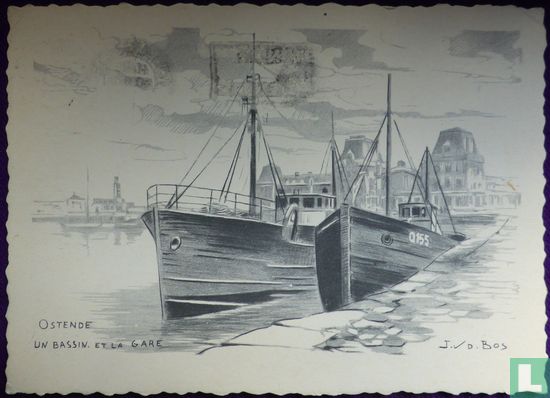



Catalogue information
Addressed to Avenue Milecamps, bruxelles Postmark Ostend July 30, 1957 Stamp Belgian 50 Centimes N ° 1027 A Year of issue 1957 1 franc N ° 1027B 1957 heraldic lion Ostend Station; It is the most important station on the Belgian coast. In the summer, there are more than 250,000 travelers every month. The station is also called the quay station or sea station. The station building was built in Belle Époque style and accommodates train passengers as well as (formerly) boat passengers. The railway architects Otten and Franz Seulen spanned the central station hall with a metal structure that is visible in the façade. It replaced a wooden structure built in 1904 that served to connect the international rail links and the boat to Dover. Construction of the new quay station began in 1910 and the building was inaugurated on August 1, 1913. The Belle Époque style was inspired by the classicism of the French 17th-century architect François Mansart, with elements of Louis XVI style and some Art Nouveau details. Two heavy, protruding, square tower buildings with pyramid-shaped roof covering define the characteristic appearance of the station's façade. A dome with glassware and decorated with two pinnacles spans the space between these two towers with cast iron arches and forms the waiting room for the travelers. A similar dome was erected between the right tower and the tracks. But it was already irreparably destroyed in 1914 by the violence of war. The station was built with blue limestone from Soignies, red Scottish granite and white stone from Euville. The A monograms in the facade refer to the reign of King Albert I. In the station there is also a royal salon (for a long time the station master's office) and a hotel.
This text has been translated automatically from Dutch
Click here for the original text



